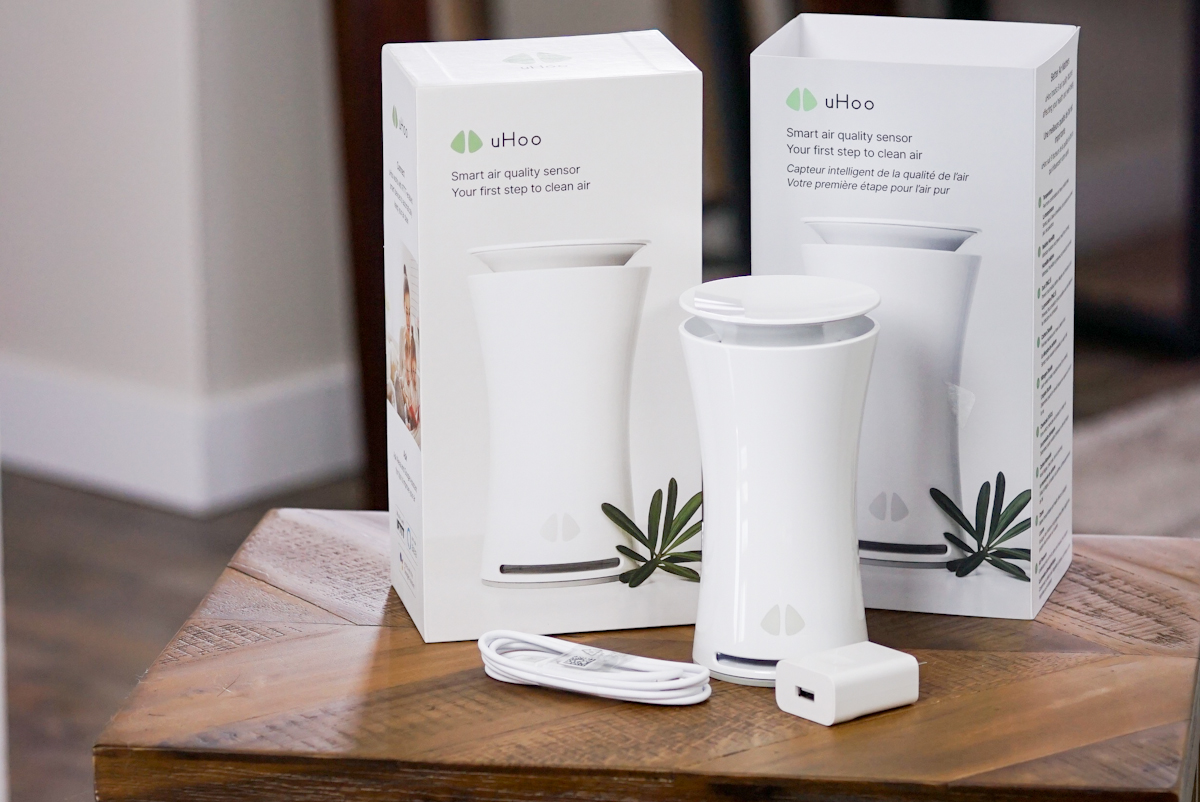
If you’re spending a lot of time indoors, it’s more important than ever to make sure the air you’re breathing is clean and safe for your whole family. That’s what first drew me to the uHoo Indoor 9-in-1 Air Quality Smart Sensor, which monitors the air in your home to ensure it’s always within safe levels. Like other smart safety sensors, this product from uHoo connects to your phone so that you can easily keep an eye on your home.
When I was growing up, we had two safety sensors in our home: a fire alarm and a carbon monoxide detector. One day, when I was 17, the carbon monoxide detector started chirping away. It was down in the basement, plugged directly into the wall. But, because there’s little to no maintenance with a sensor that never needs a battery change, we weren’t sure what to do when it started going off. (We didn’t even know where the sound was coming from, at first!)
A quick call to the non-emergency response line and a visit from some very tall firemen later, we found the problem. It turns out that the device was over 20 years old, and its sensors were just worn out and no longer properly calibrated. Luckily, we were safe and sound at home the whole time—but that sure was an uncomfortable afternoon I’ll never forget.
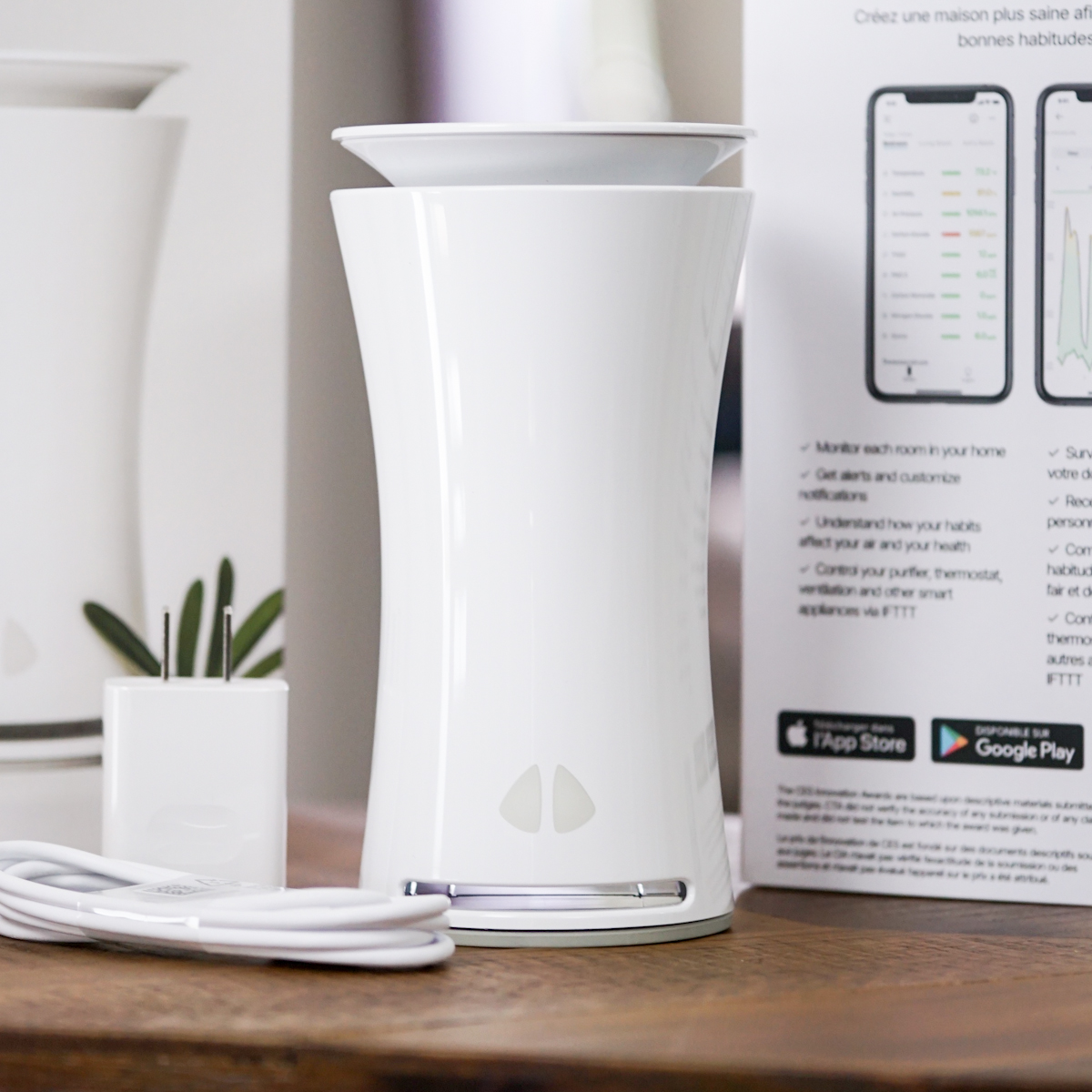
What does the uHoo Indoor 9-in-1 air quality smart sensor do?
The uHoo Indoor Smart Sensor keeps an eye on nine different factors involved with air quality, so that you don’t have to worry about them. It’s a device made, I think, for peace of mind. It doesn’t filter the air in your house to clean it, or start screaming at the top of its electronic lungs when its batteries need changing. It’s not an active part of your daily life, but it’s there, keeping a watchful eye and a comprehensive record.
Unlike your home’s old carbon monoxide detector, the uHoo 9-in-1 Air Quality Smart Sensor measures nine different factors. There’s carbon monoxide, of course, so you can replace the 20-year-old device in your basement. (Well, you should replace it either way, even without the uHoo—20 years is too many years for an air quality sensor!) Beyond that, the uHoo also measures temperature, humidity, air pressure, carbon dioxide levels, nitrogen dioxide levels, and ozone. Finally, it gives you a sum of your volatile organic compounds (TVOC) and your concentration of super fine dust (PM2.5).
What I appreciate about the uHoo App is that it has an information page on each category that it’s measuring, so that you can learn a little more about the air in your home and get tips on how to improve it. It also highlights a “uHoo Virus Index,” which shows you how to improve the air quality in your home. Importantly, it does not measure viruses; rather, it uses the best research available to create a cleaner environment overall.

What’s in the box of the uHoo indoor smart sensor?
In the box of the uHoo Indoor Smart Sensor, you’ll find the uHoo itself, a micro USB power cord, and a USB power adaptor. Setup is mainly done through the app, and there are no moving parts to attach or calibrate.
What surprised me about the uHoo is that its setup is… Well, it’s kind of a chore! It took me a good twenty minutes to get this set up and connected to the Internet, with one false start quickly turning into four resets and re-attachments. I was just about done with my uHoo on the fifth go, but it attached and confirmed right away.
It turns out that it was worth the wait. Once I had it set up once, I was able to unplug it and move it around the house without losing the connection. When I plugged it in again in other locations, the device would immediately re-sync with my phone and give me an updated report on its new location.
My one caveat about the uHoo Smart Sensor is that it, like a toothbrush I recently reviewed, demands location access in order to function. I know that companies use this information for their own marketing and logistics departments, but I don’t like how underhanded it feels! I had to manually input my country and city later on in the setup anyways, so shouldn’t I be able to opt out of location tracking?

Let’s talk virus protection
The uHoo Indoor Smart Sensor’s main appeal, I think, is its “uHoo Virus Index.” This index, which has a patent pending, is sold by the company as a way to help you “deactivate” viruses in your home.
Well. I’m a blogger, not a doctor, but I have a few things to say about it—both good and bad. But this is my own, unscientific opinion, based on the literature provided by uHoo. If you want to know more about viruses in your home, I’d recommend talking to a virologist or doctor about it directly.
First off, I think the term “virus index” is intentionally misleading. If you read the details of the uHoo carefully, you’ll notice that there is nothing in its design that’s actually made to detect viruses. It can’t tell if a small particle is a virus or anything else, and it isn’t made to do so! On principle, that makes me skeptical about their claims. I think uHoo oversells what their product really is, which is an excellent, sensitive, easy-to-use smart sensor.
What it sounds like to me that uHoo’s Virus Index actually does is calculate the relative potential risk of viruses continuing to be viable in your home, based on a range of different air quality factors. The scientific community believes, for instance, that some viruses may thrive in drier air; so, your risk rating in the uHoo Virus Index goes up if your home’s air is too dry. (However, you’ll notice in the study linked that values like humidity affect different kinds of viruses differently, which uHoo does not account for.)
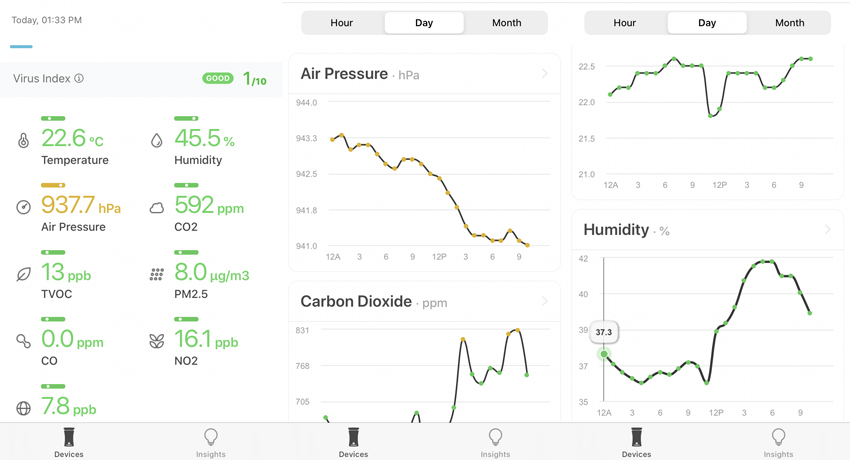
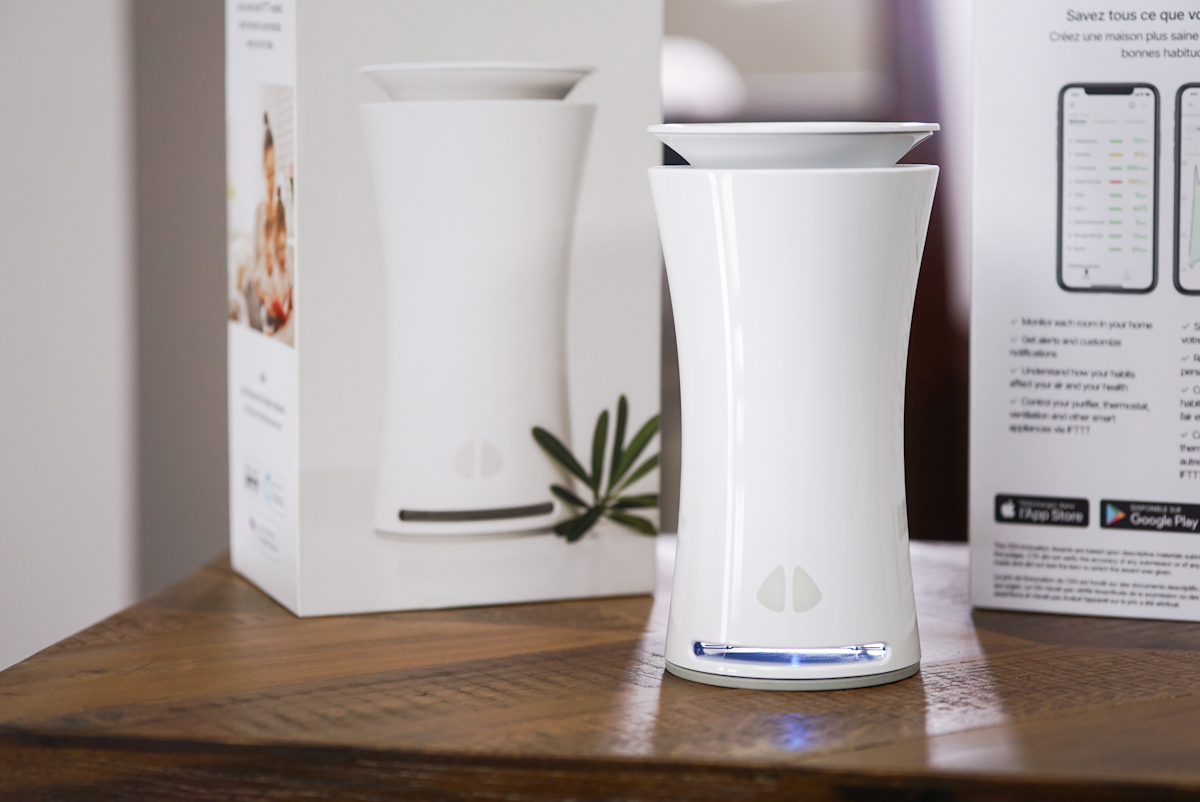
So, does the uHoo smart sensor work?
uHoo’s Indoor Smart Sensor is great for keeping an eye on air quality factors like humidity levels, which can affect mould growth and throat irritation. It’s also excellent for measuring how much dust is in the air, which I bet could really help people with asthma.
Overall, I would be wary of using the uHoo Virus Index as front-line protection from colds and viruses. However, I personally like the idea of a comprehensive overview of the air quality in my home. I feel safer knowing that something is keeping an eye on my air quality, and I like knowing when the concentration of particulates in my home increases. It gives my family and I peace of mind to be able to track how the air in our home changes over time. Its app is a little slow, but it’s easy to use and understand.
I was skeptical about this smart home sensor after its long setup process, but it quickly changed my mind. On its first day, my uHoo reported incoming clouds and a potential for rain. I scoffed at it, looking at the clear skies in my weather app. When I went outside a few minutes later, though, I saw big, heavy, grey clouds overhead, and I was sold. Its readings are accurate and precise, which makes it easy for me to know when I need to make simple changes like turning on my humidifier or fan.
Sure, the uHoo doesn’t truly scan your air for viruses—but it knows to alert me when the air in my house is still and stale, and that’s good enough for me.
Shop the uHoo Indoor 9-in-1 Air Quality Smart Sensor and other safety sensors online at Best Buy.


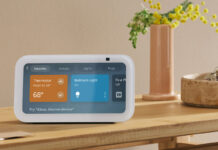
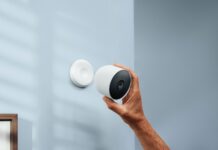
I like that it “keeps an eye on nine different factors involved with air quality, so that you don’t have to worry about them.”
I like that the uHoo air quality monitor measures nine different parameters through individual sensors, and you can see those readings in real time via the uHoo App on your phone.
all of that info might scare the pants off of us.
Love the aesthetic
I/m really disappointed after reading your review as I thought it was a lot better. If I wanted to know my weather report for my area, I’d just skip over to the local weather report in my area. Not worth the price.
Comments are closed.